Refrigerator Pickled Peppers (Whole and Sliced)
Want to learn how to make pickled peppers in the refrigerator? This easy refrigerator pickled peppers recipe is ready in 24 hours and can be used for any type of pepper, whole or sliced.

Want to Save This Recipe?
Enter your email & I’ll send it to your inbox. Plus, get new plant-based recipes in your inbox!
By submitting this form, you consent to receive emails from Fork in the Road.
Love pickled peppers? We love their crunchy texture in salads and top of soup, and we’re always looking for ways to extend the life of fresh peppers throughout the year. Thankfully there’s a super simple way to enjoy pickled peppers at home without the hassle of canning — using just your refrigerator!
Here’s why you should try out this super simple pickled pepper recipe:
- No canning. No water baths, no long wait times. This refrigerator pickling recipe means your peppers are ready after a short 24 hour soak in the fridge.
- All peppers are welcome. Jalapeños, bananas, sweet, and poblano — it doesn’t matter the type of pepper, this is a one-recipe-fits-all method.
- Completely customizable. Use this recipe as a base and add your favorite fresh herbs, spices, and other ingredients to bring interesting flavor combinations to your peppers.
Ready to deep dive into how to quickly pickle peppers in the refrigerator? Let’s do it!
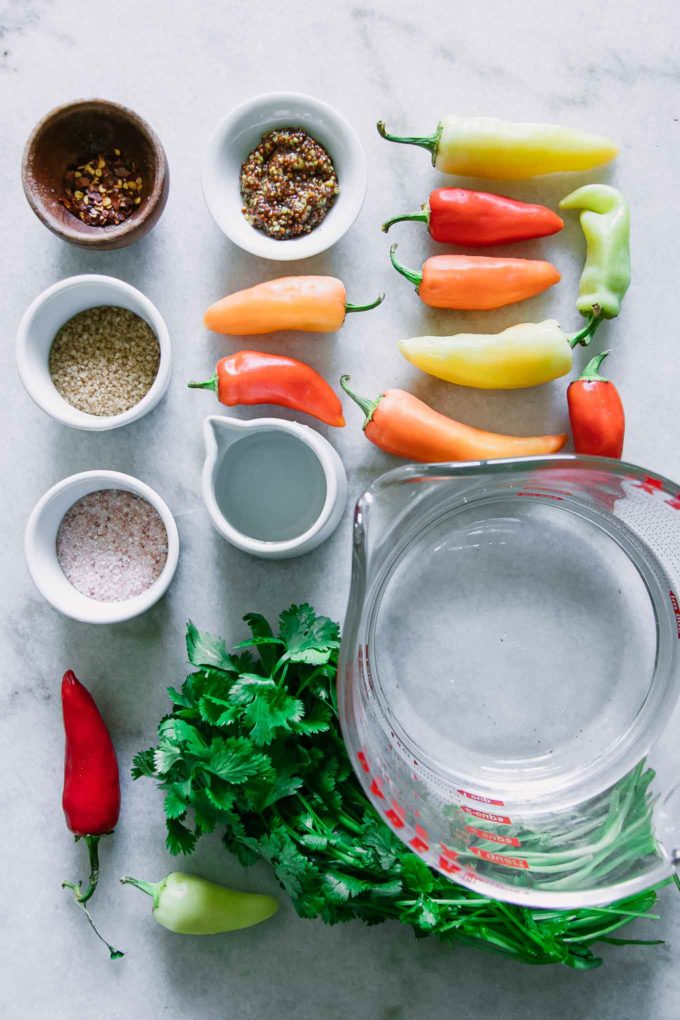
🌶 How to make pickled peppers in the refrigerator (step-by-step)
1️⃣ Step One: Prep the peppers
The first step to making easy refrigerator pickled peppers is to give them a good wash and decide if you want to pickle the peppers whole or slice them into smaller pieces. Both ways are delicious, but slices will have a stronger flavor as the brine will soak into the smaller pieces more easily.
⭐️ If slicing: Cut the slices a bit thicker (¼ inch or ½ centimeters) for a crunchy snack or a bit thinner (⅛ inch or ¼ centimeters) if you’re using on tacos or in salads. Experiment with what works for you, but you can’t go wrong either way.
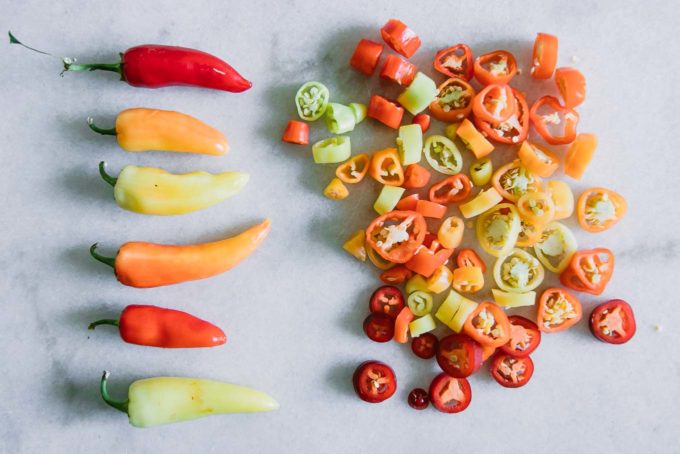
⭐️ If pickling whole: Simply cut 1-2 slices lengthwise along the body of your pepper to provide a way for the brining liquid to seep into the pepper. We want the brine to be able to coat the pepper on the outside and inside.

2️⃣ Step Two: Prepare the pickling jar
Next, add the whole or sliced peppers to a glass jar with fresh herbs like dill or cilantro, seeds like mustard or caraway, garlic, and red pepper flakes if you like a bit of spice. You can also add other vegetables to the jar if you’d like, we like adding sliced carrots or even lime slices to our peppers.
Make sure there is about ½ – 1 inch (2-3 cm) of space above the peppers and below the jar’s lid so that the pickling liquid will completely cover the peppers so they pickle evenly. Any pieces of vegetable that extend out of the top of the water will not be pickled and could grow mold or other bacteria while storing, so make sure there’s enough space.
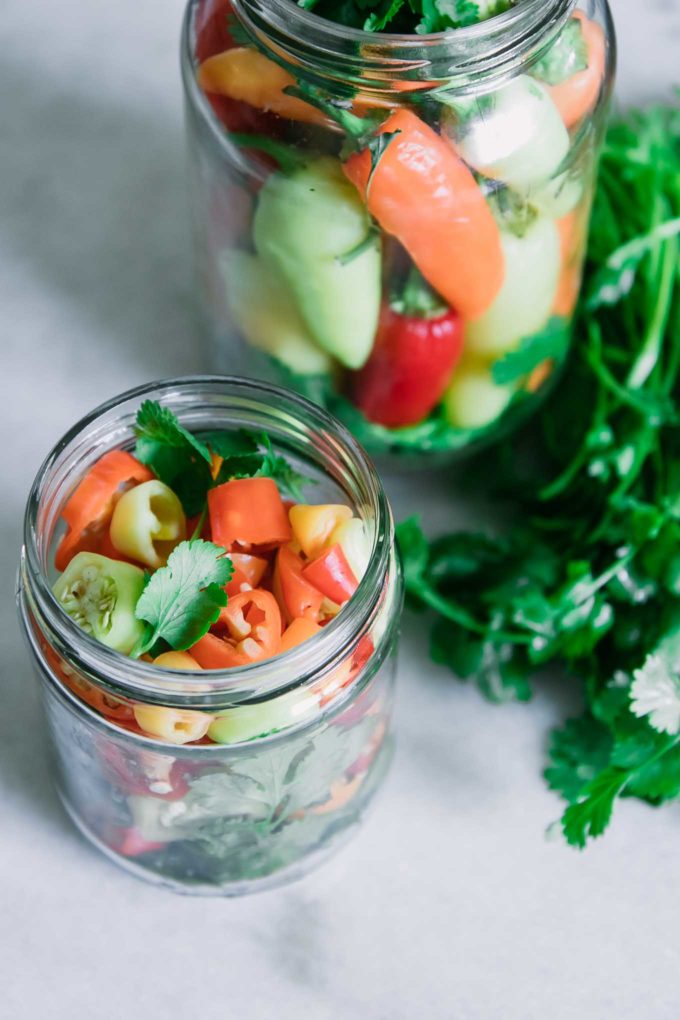
⭐️ Pepper tip! Choose a jar that you can pack the peppers into tightly so that the force of pressing against the other peppers keeps them submerged in the brine when pickling. Loose whole peppers will float and may not pickle evenly if they float to the top.
3️⃣ Step Three: Prepare and add the brine
Now it’s time to make the brine, or the salted and sugared vinegar water that will work the magic of pickling your peppers.
⭐️ Our favorite foundational refrigerator pickling brine recipe is:
- 1 cup water
- 1 cup vinegar (distilled vinegar, white wine vinegar, and apple cider vinegar are our favorites)
- 1 tablespoon salt
- 1 tablespoon sugar
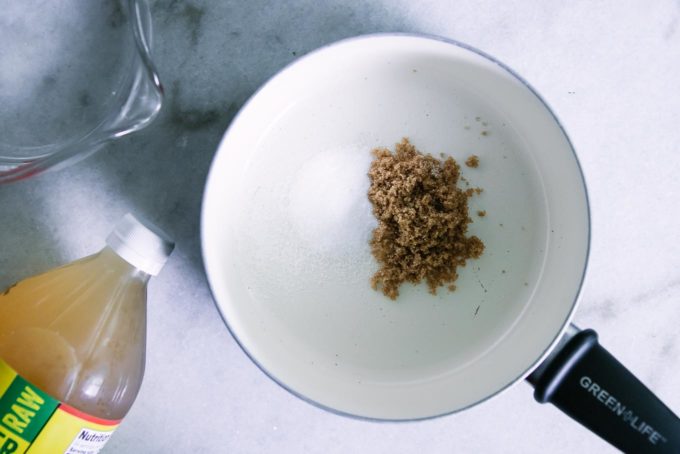
We increase or decrease the amount of brine depending on the amount of vegetables we’re pickling, but this is the general formula we use that always produces great tasting quick pickles.
To make the brine, simply add water, a vinegar of your choice, salt, and sugar to a medium saucepan and bring to a boil.
💡 Want more tips for making pickling brine? Check out my full recipe, tips, and advice for making a refrigerator pickling brine here.
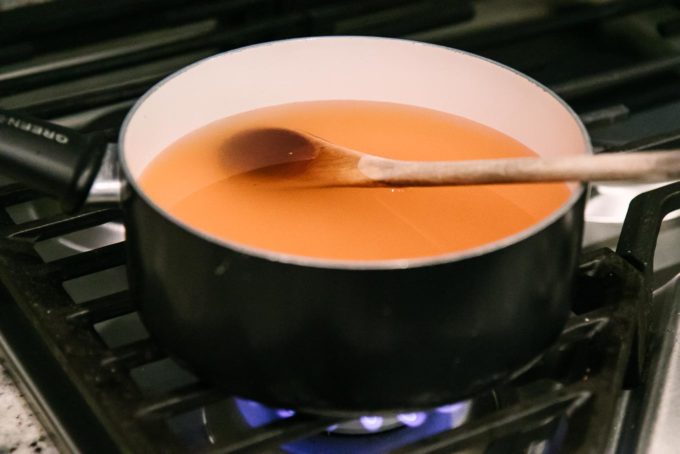
Pour the hot brine into the jar and completely cover the peppers, then close the lid tightly and let cool completely on the counter until it reaches room temperature.
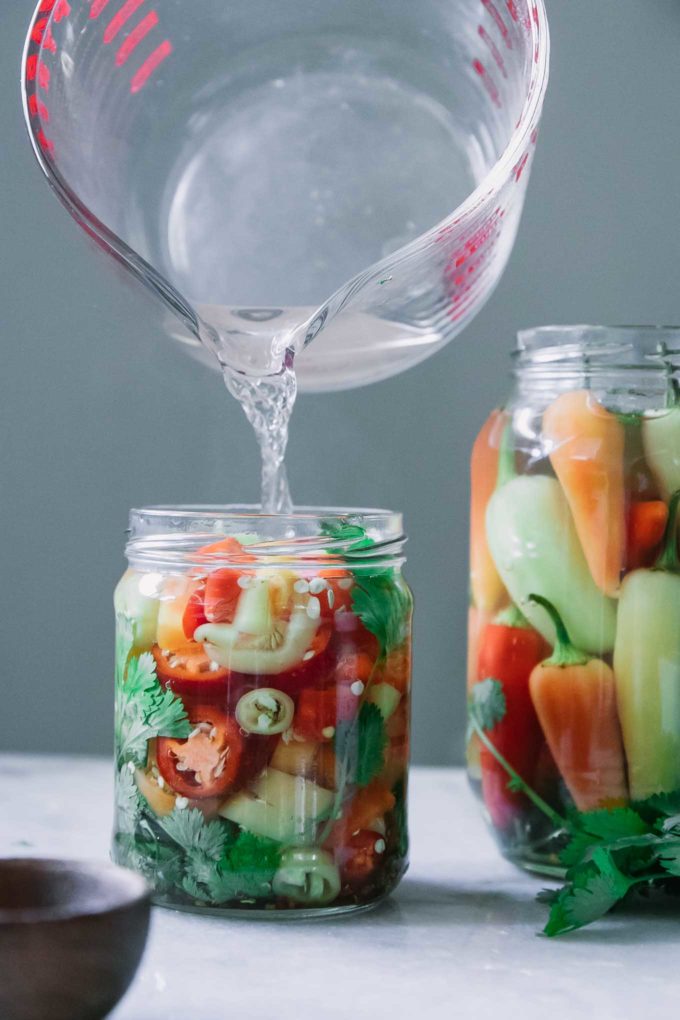
⭐️ Which vinegar should you choose? For the mildest flavor choose distilled white vinegar (our choice for peppers). For more of a flavor punch try white wine vinegar or apple cider vinegar. Malt and balsamic vinegar have the strongest flavor, but we have found the taste of these vinegars is too strong when quick pickling.
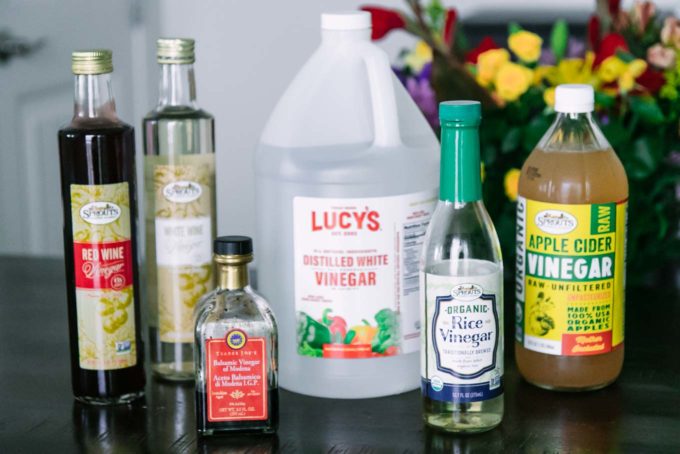
4️⃣ Step Four: Refrigerate for a minimum of 24 hours
Once the jar of peppers is cool, store in the refrigerator with a lid tightened and let the peppers pickle in the salted vinegar brine.
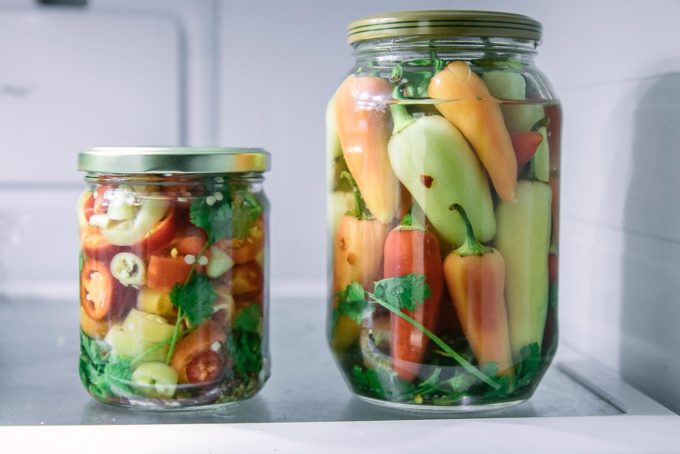
If you want to serve quickly we recommend letting sliced peppers soak for at least 4 hours and whole peppers for at least 24 hours to let them soak up the brine, but for best results and flavor wait at least 24-48 hours (or more). Pickled peppers are good for up to 2-3 months in the refrigerator.
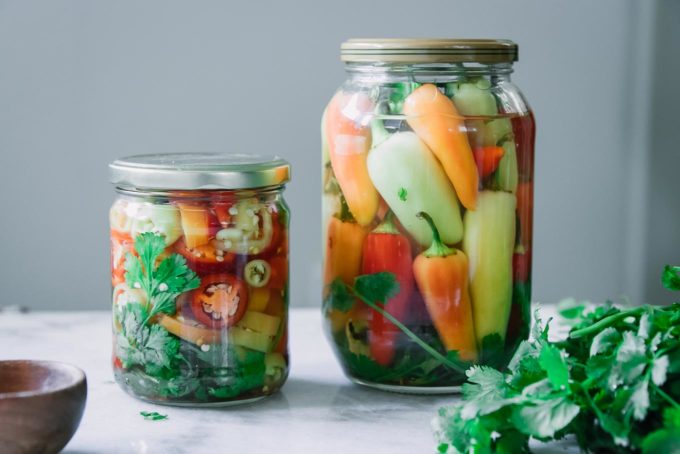
❓ Recipe questions + quick tips
You can pickle peppers whole or sliced, both are delicious. If pickling whole, choosing smaller peppers will allow them to pickle quicker as the brine can soak into smaller peppers faster. If your peppers are larger, just allow more time to quick pickle in the refrigerator before serving.
Choose a jar small enough so that the peppers can be packed in tight, but tall enough to have about ½ – 1 inch of space between the top so that the brine liquid can completely submerge them.
You can eat sliced pickled peppers as soon as 4 hours after pickling, however we suggest waiting a minimum of 24 hours for best results for whole peppers. If your peppers are thin, then less time is needed for good flavor. However, if your peppers are thick then they may need more time to soak before they are fully pickled.
Pickled peppers last up to 2-3 months in the refrigerator as long as they are completely covered with the liquid brine.
Pickled peppers are healthy! Per the USDA Food Nutrient Database, one cup of peppers has 1 gram of plant-based protein, 1.8 grams of fiber and is a good source of vitamin C and vitamin A. However, the brine is high in sodium due to the salt needed to pickle the vegetable, so use as a compliment to meals or eat a few peppers spears as a snack with a well-balanced diet.
It’s possible to pickle any type of peppers: bell peppers, banana peppers, jalapeños, poblano peppers — you name it, you can pickle it.
Quick pickling vegetables doesn’t present the same food safety hazards as traditional pickling and canning. However, to make sure your peppers stay safe while stored in the refrigerator make sure to completely cover in the liquid brine and to feel the peppers before eating. If they’re slimy, throw them out.
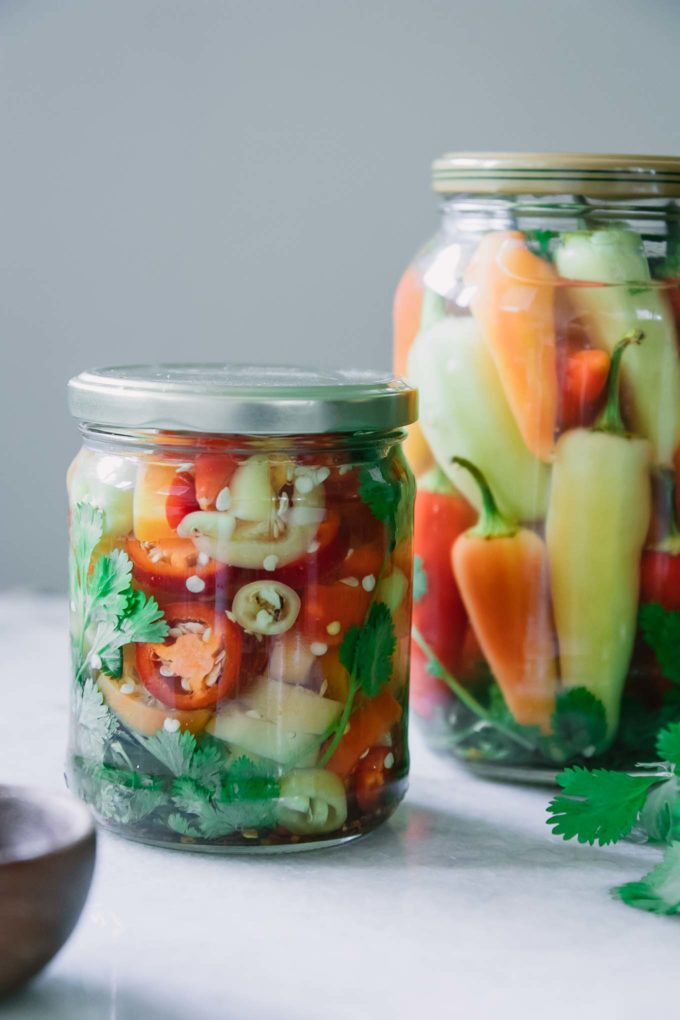
💡 Ideas for serving pickled peppers
Quick pickled vegetables like peppers are great additions to salads, bowls, soups, tacos, or are even a great simple snack. Here are a few recipes and ideas to get you started:
- As a taco or nacho topping. Sprinkled sliced pickled peppers on top of tacos or nachos for a spicy kick, like our Chili Lime Cauliflower Tacos.
- Add to a salad or bowl. Top a salad or grain bowl with pickled peppers, like this Mexican-Style Three Bean Salad or Pozole Verde.
- As a simple snack. Pickled whole peppers are a great easy snack — if you can handle the heat!
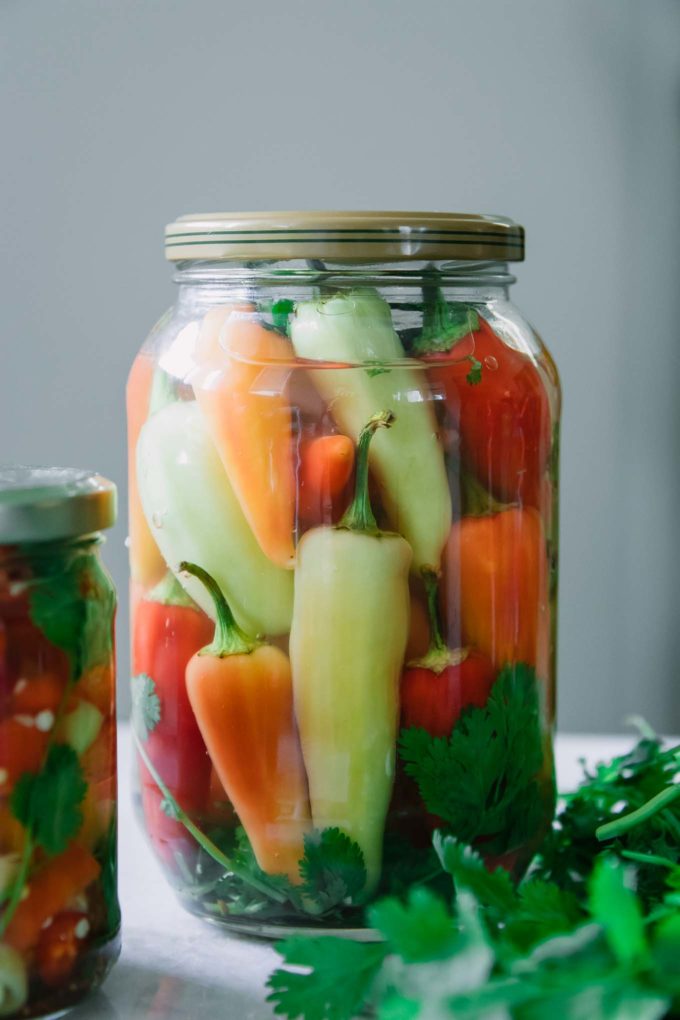
♻️ Sustainable kitchen tips + tricks
While pickling seasonal vegetable is sustainable in itself, there are a few tips and tricks you can learn to make this peppers recipe even more environmentally friendly:
Take advantage of pepper season! The best time to pickle is during the height of pepper season. In California that’s May to December, but check out Seasonal Food Guide’s produce seasonality calendar to find when peppers are in season near you.
Save glass food jars to use for quick pickling vegetables. We’re always on the lookout for great jars to keep around the house for pantry and food storage, so keep an eye out for jars you can save to use for pickling peppers Learn how to easily clean labels from food jars for pickling here.
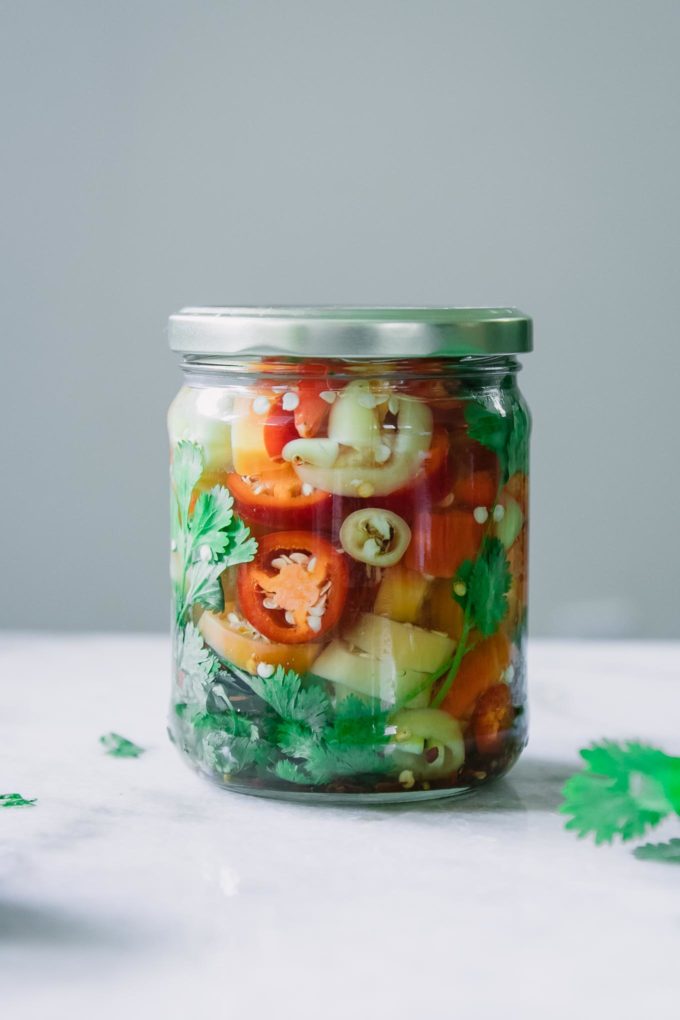
👩🍳 More easy refrigerator pickled vegetable recipes
We love quick pickling vegetable, here are a few of our favorite recipes:
- Quick and Easy Pickled Asparagus
- Easy Dill Pickles Made the Refrigerator
- Refrigerator Pickled Green Beans
- Quick Pickled Cauliflower
- Refrigerator Pickled Radishes
- No Canning Refrigerator Pickled Brussels Sprouts
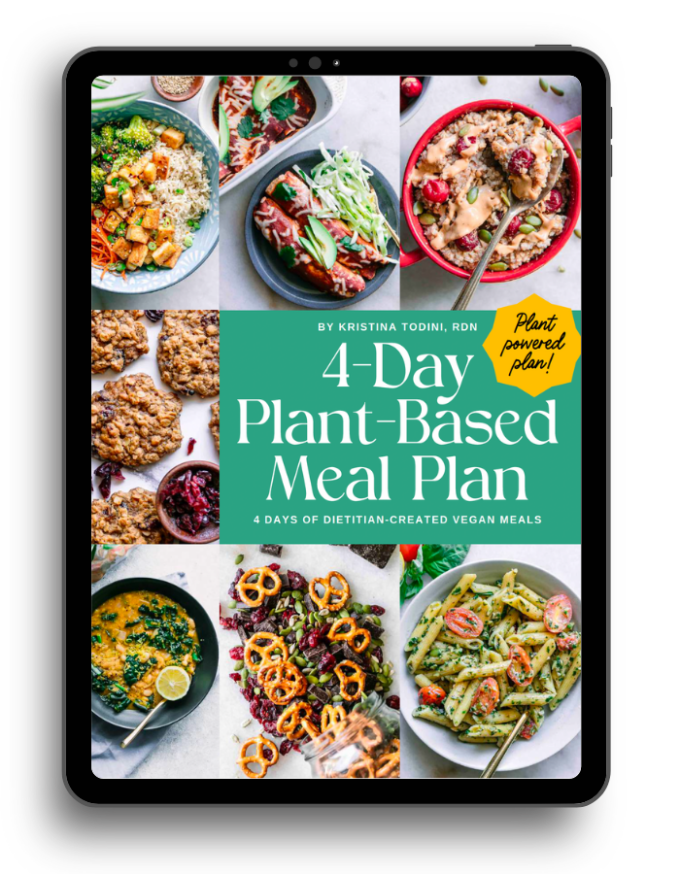
NOT SURE WHERE TO START WITH PLANT-BASED EATING?
Get my 4-Day Plant-Based Meal Plan to start your journey on the plant path.
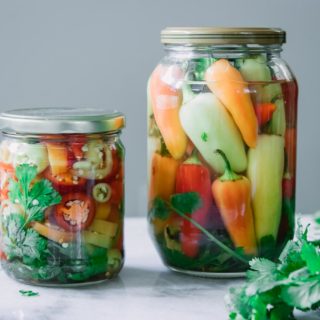
Refrigerator Pickled Peppers Recipe
Ingredients
- 1 pound peppers
- ¼ cup cilantro or other herbs
- 2 tablespoons mustard seeds
- 2 whole garlic cloves sliced thin
- ¼ teaspoon red pepper flakes optional
- 1 cups water
- 1 cup vinegar
- 1 tablespoon salt
- 1 tablespoon sugar
Instructions
- Prep the peppers: Wash peppers and slice into ¼” thick slices, if desired.
- Prepare the pickling jar: Add cut peppers to a tall jar and add cilantro or other desired herbs, mustard seeds, garlic, and red pepper flakes.
- Prepare and add the brine: In a medium saucepan bring the water, vinegar, salt, and sugar to a boil. Once boiling, pour into the jar until the liquid completely submerges the peppers. Close the lid on the jar tightly.
- Pickling instructions: Let the jar cool on the counter until it reaches room temperature. Once cooled, put the jar into the refrigerator and let the peppers pickle for at least 4 hours before serving, but for best results serve after at least 24 hours. Quick pickled peppers are good up to 2-3 months in the refrigerator.
Notes
- Which vinegar should you choose? White vinegar, white wine vinegar, and apple cider vinegar are the best vinegar choices for pickling peppers.
- Recommended jar: Because peppers are a tall vegetable if pickling whole, choose a tall jar so they fit snug with about ½ – 1 inch space (2-3 cm) below the lid.
- Other recommended tools: small saucepan, cutting board, knife set
- Prep ahead and storage: Refrigerator pickled peppers should be made at least 4 hours before serving, but for best results make at least 24-48 hours ahead. Keep pickled peppers refrigerated and they can be enjoyed for up to 2-3 months. Do not freeze pickled peppers.
- Nutrition notes: This recipe uses only plant-based ingredients and it is gluten-free. It does call for a high amount of salt for the brine, however the amount actually absorbed by the peppers themselves is small compared to the amount of salt used in the recipe.

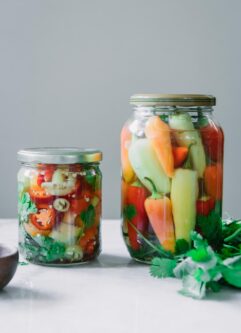
This recipe sounds great but I have 2 questions. In one place you say your preferred ratio is 1 cup of water to 1 cup of vinegar. In the recipe you say 2 cups of water to 1 cup of vinegar. Which one is correct?
If the 1:1 is correct, is that still enough for 1 pound of peppers?
Thanks for the catch, Karen! I updated the recipe card, it should actually be a 1:1 ratio of water to vinegar…however you can adjust based on your own desired taste. If you want a less pungent/strong brine then you can add more water. Hope that helps!
My sweet poblano peppers went crazy this year! Then I found your recipe and I had the perfect solution! Never pickled anything before and my first try was successful using your tips and this great recipe. Just enough tang and spice with apple cider vinegar and a pinch of red pepper seeds, we loved them! So I’ve made more and will happily branch out and experiment from this point. Thank you for all the ideas! I had to figure out how many peppers in a pound – and then if that number should include the seeds or not. What size jar? How many pounds fit in that jar? A happy learning experience, even though I had to make a little more brine to finish off my first jar.
I’m glad you liked it, Jackie! The weight of the peppers is kind of a guestimate because it will really depend on how big your peppers are. I used the total weight of the peppers that fit into the jar I was using and that came out to be about 1 pound, but it will vary depending on your peppers…and your jar!